Biology & Applicable Sciences: XSE's third domain of study
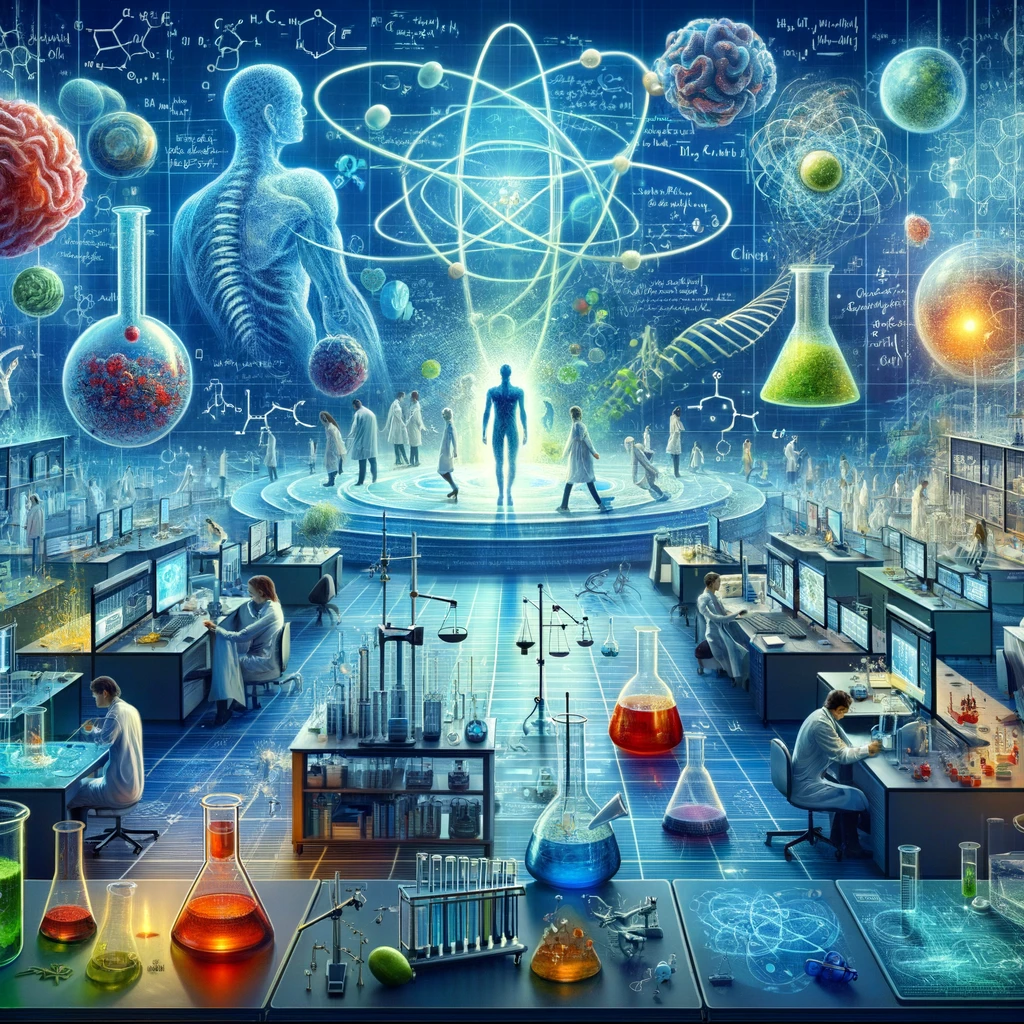
Biology, in the context of the human as an integral system of mind, body, and spirit, refers to the scientific study of living organisms and their vital processes. When applied to humans, it involves understanding the biological aspects of the human organism and its interconnectedness with mental, physical, and spiritual dimensions. Here’s a breakdown of how biology relates to each component:
Neurotransmitters and Mental Processes: Biology plays a role in understanding the chemical messengers (neurotransmitters) that influence mental processes. For instance, serotonin and dopamine are neurotransmitters associated with mood and emotion regulation.
Brain Plasticity: The biological concept of neuroplasticity highlights the brain’s ability to adapt and change. This is relevant to psychology as it explores how experiences and behaviors can reshape neural pathways, influencing cognitive functions.
Hormones and Behavior: Biological factors, such as hormonal fluctuations, impact behavior. For example, changes in hormone levels can affect stress responses, mood, and interpersonal interactions.
Anatomy and Physiology: Biology explores the structure (anatomy) and function (physiology) of the human body. It investigates organs, tissues, and systems, examining how they work together to maintain life. For example, understanding the cardiovascular system helps explain how blood circulation supports both physical and cognitive functions.
Genetics and Heredity: Biology delves into genetics, studying how traits are inherited and expressed. The human genome contains information that influences physical characteristics, susceptibility to diseases, and, to some extent, behavioral tendencies.
Neurobiology: Examining the nervous system and the brain falls under the purview of biology. Neurobiology explores how the brain functions, including the intricate connections between neurons, neurotransmitters, and their impact on thoughts, emotions, and behaviors.
Physical and Spiritual Well-being: Biology contributes to holistic health by recognizing the interconnectedness of physical and spiritual aspects. Practices like meditation and mindfulness, which have both psychological and spiritual dimensions, can have physiological effects on the body.
Endocrine System and Stress Response: The biological stress response, involving the release of stress hormones like cortisol, has implications for both physical and spiritual well-being. Understanding this connection allows for a holistic approach to stress management.
Health and Belief Systems: Biology acknowledges that individuals may draw on spiritual beliefs for comfort and coping during health challenges. This intersection is evident in studies on the impact of religious or spiritual practices on health outcomes.
Biopsychosocial Model: The biopsychosocial model, often used in medical and psychological contexts, integrates biological, psychological, and social factors to understand health and illness comprehensively. This model recognizes the importance of addressing both physical and mental aspects for overall well-being.
The Integration of the Body, Mind, and Spirit in Biology
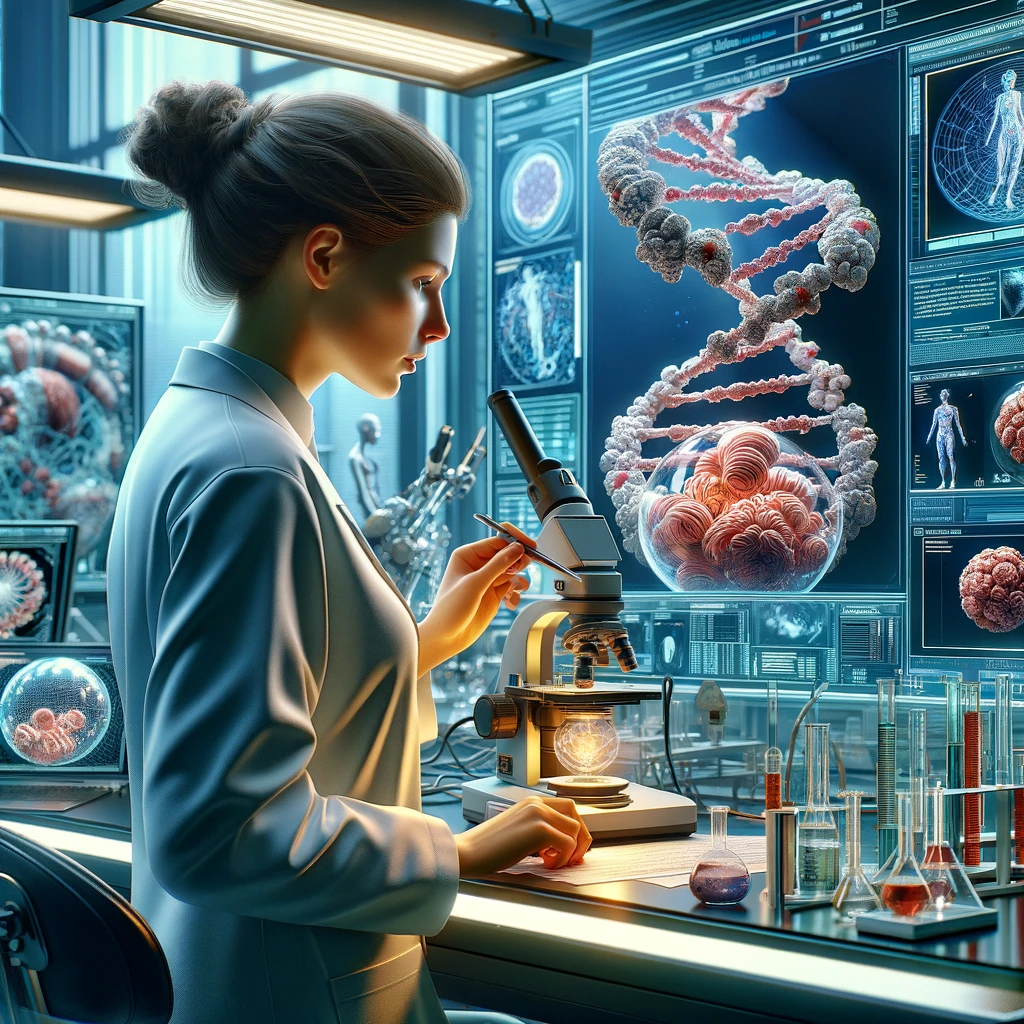
An integral approach to biology, considering the interconnectedness of mind, body, and spirit, involves a multidisciplinary perspective. Various sciences contribute to a comprehensive understanding of human existence. Here’s an exploration of how other sciences entwine with this integral approach to biology:
1. Psychology:
Behavioral Sciences: Psychology, as mentioned earlier, explores the mind and behavior. It delves into cognitive processes, emotions, and behaviors, connecting the psychological aspects of an individual to the biological underpinnings studied in biology.
Clinical Psychology: Integrating biological knowledge with clinical psychology helps in understanding and treating mental health disorders. Biological factors, such as neurotransmitter imbalances, are considered in therapeutic approaches.
Developmental Psychology: Examining how biological changes influence psychological development, especially across the lifespan, provides insights into the interconnected nature of biological and psychological processes.
2. Neuroscience:
Neurobiology: Neuroscience focuses specifically on the nervous system and the brain. It provides detailed insights into the neural mechanisms underlying cognitive functions, emotions, and behaviors, bridging the gap between biology and psychology.
Cognitive Neuroscience: This subfield explores the neural basis of cognitive processes, connecting biological structures and functions to mental activities such as perception, memory, and decision-making.
Clinical Neuroscience: Understanding the neurological basis of mental disorders contributes to the development of treatments and interventions in clinical neuroscience.
3. Sociology and Anthropology:
Social Sciences: Sociology and anthropology contribute to the holistic perspective by examining how societal and cultural factors impact individuals. These sciences explore how societal norms, beliefs, and practices influence both biological and psychological dimensions.
Cultural Anthropology: Cultural anthropology investigates the ways in which cultural practices and beliefs shape human experiences. The interplay between cultural influences and biological factors is essential for a comprehensive understanding of human behavior.
4. Medicine:
Clinical Medicine: The medical sciences, including fields like internal medicine and psychiatry, incorporate biological knowledge into the diagnosis and treatment of physical and mental health conditions.
Psychosomatic Medicine: This field explores the interaction between psychological factors and physical health. Understanding how mental and emotional states influence physical well-being aligns with the integral approach to biology.
5. Philosophy and Theology:
Philosophy of Mind: Philosophy contributes by exploring the nature of consciousness, free will, and the mind-body problem. This interdisciplinary dialogue helps bridge gaps between the philosophical understanding of mind and the biological perspectives.
Theology and Spirituality: The study of theology and spirituality enriches the integral approach by acknowledging the spiritual dimension. The interconnection between spiritual beliefs, well-being, and ethical considerations is explored in the context of biology.
Holistic Perspective:
Holistic Health and Integrative Medicine: These fields emphasize the integration of biological, psychological, and spiritual dimensions for overall well-being. Integrative medicine incorporates complementary and alternative approaches alongside conventional medical practices.
Systems Science: Viewing the human as a complex system, systems science contributes by examining the interactions and feedback loops between biological, psychological, and spiritual components.
Interdisciplinary Research:
Bioinformatics: Integrating biology with information sciences, bioinformatics analyzes biological data to understand complex biological systems. This interdisciplinary approach aids in studying genetic, molecular, and systems-level interactions.
Biopsychosocial Model: Widely used in medical and psychological settings, this model integrates biological, psychological, and social factors, emphasizing a holistic understanding of health and illness.
In summary, an integral approach to biology benefits from the contributions of various sciences, creating a rich and multidimensional understanding of human existence. The collaboration of biology with psychology, neuroscience, social sciences, medicine, philosophy, and other disciplines allows for a more comprehensive exploration of the interconnected nature of mind, body, and spirit.
The need for more than just biology
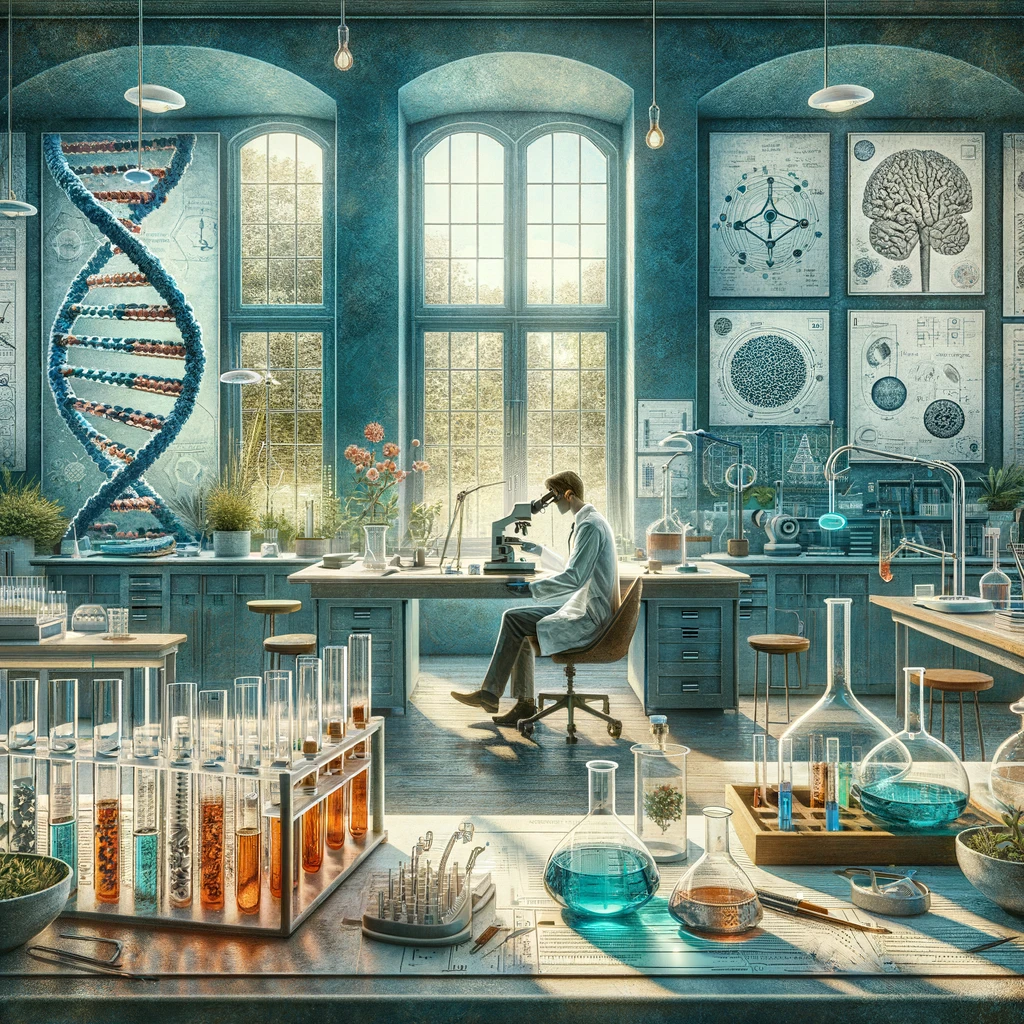
When using XSE in regards to an SOI that is not yourself, or if your SOI is yourself but you are evaluating a direction of influence between yourself and a particular System of Context (SOC), other sciences quickly need to be brought to the table in order to fully understand the physics behind the operations, potential outcomes and ramifications, etc. You need to know and understand your SOI scientifically, no matter what it is, from the quantum level to the whole and effective, long-term level. So bring any other applicable sciences to the table and start evaluating your system from a comprehensive and complete vantage point.
Other Applicable Sciences
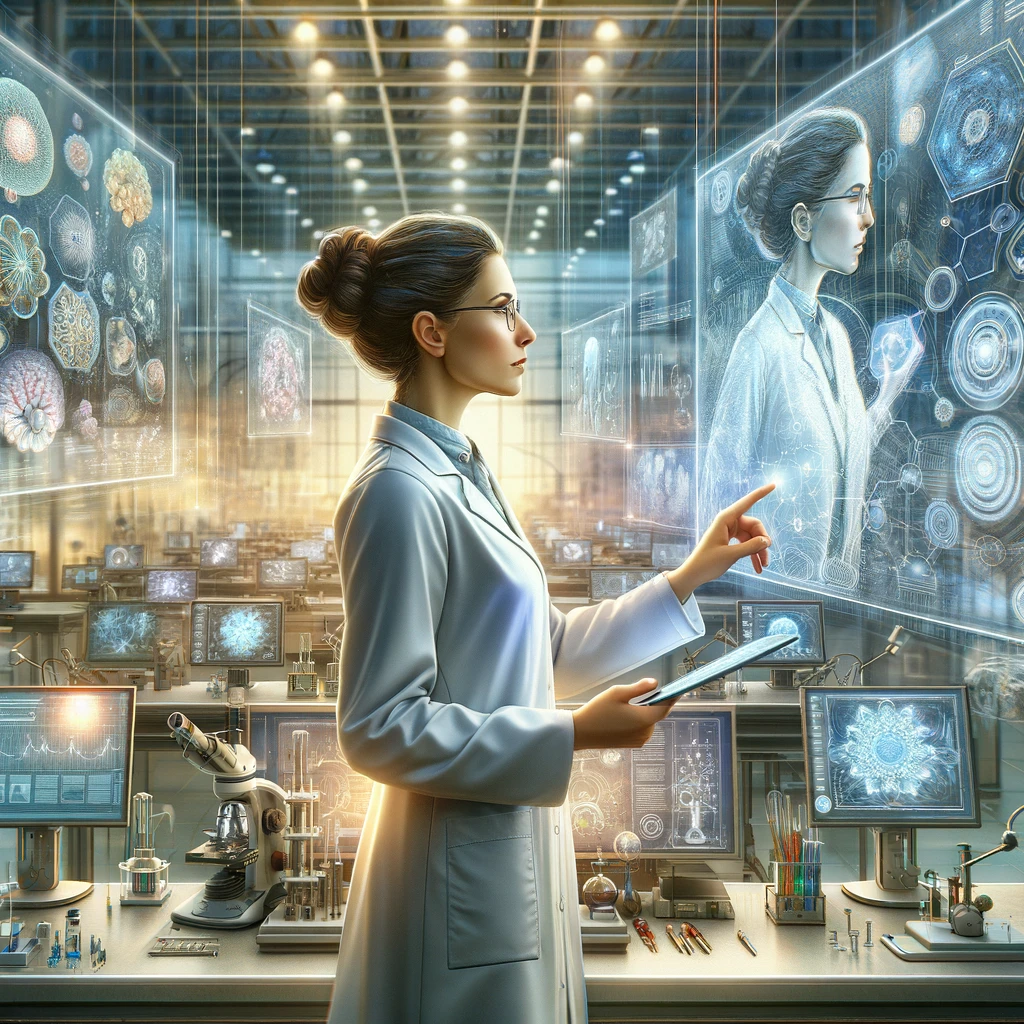
Natural Sciences:
Physics: Studies the fundamental principles governing the physical world, including motion, energy, and forces.
Chemistry: Investigates the properties, composition, and behavior of matter, as well as the changes it undergoes during chemical reactions.
Biology: Examines living organisms and their interactions, covering fields such as genetics, ecology, and physiology.
Astronomy: Explores celestial bodies, their composition, behavior, and the broader universe.
Earth Science: Encompasses geology, meteorology, oceanography, and environmental science, studying Earth’s structure, processes, and natural phenomena.
Social Sciences:
Psychology: Focuses on the study of the mind, behavior, and mental processes of individuals and groups.
Sociology: Investigates social structures, institutions, and the interactions among individuals within societies.
Anthropology: Explores the cultural, social, and physical aspects of human societies, including archaeology and cultural anthropology.
Economics: Analyzes the production, distribution, and consumption of goods and services within societies.
Political Science: Examines political systems, government structures, and the behavior of political entities.
Geography: Studies the physical and human characteristics of Earth’s surface, including spatial patterns and interactions.
Formal Sciences:
Mathematics: Deals with abstract structures, patterns, and relationships using logical reasoning and quantitative analysis.
Computer Science: Focuses on the study of algorithms, data structures, and the design and development of computer systems and software.
Health and Medical Sciences:
Medicine: Diagnoses, treats, and prevents diseases, emphasizing the health and well-being of individuals.
Nursing: Focuses on patient care, health promotion, and disease prevention within healthcare settings.
Pharmacy: Deals with the preparation, dispensing, and effects of medications to optimize patient health.
Interdisciplinary and Applied Sciences:
Environmental Science: Integrates principles from various sciences to study the environment, ecosystems, and the impact of human activities on nature.
Bioinformatics: Combines biology and information sciences to analyze biological data, especially in genomics and systems biology.
Biotechnology: Applies biological processes, organisms, or systems to develop products and technologies for various purposes.
Neuroscience: Integrates biology and psychology to study the nervous system, including the brain and its functions.
Humanities and Arts:
Philosophy: Explores fundamental questions about existence, knowledge, values, reason, mind, and language.
Literature: Examines written and oral works of fiction, poetry, and drama to understand human expression and culture.
History: Studies past events, societies, and individuals to understand the development and evolution of human civilizations.
This overview provides a glimpse into the diverse and interconnected nature of scientific disciplines, each contributing unique perspectives to our understanding of the world.
The Integration of Physics and Biology
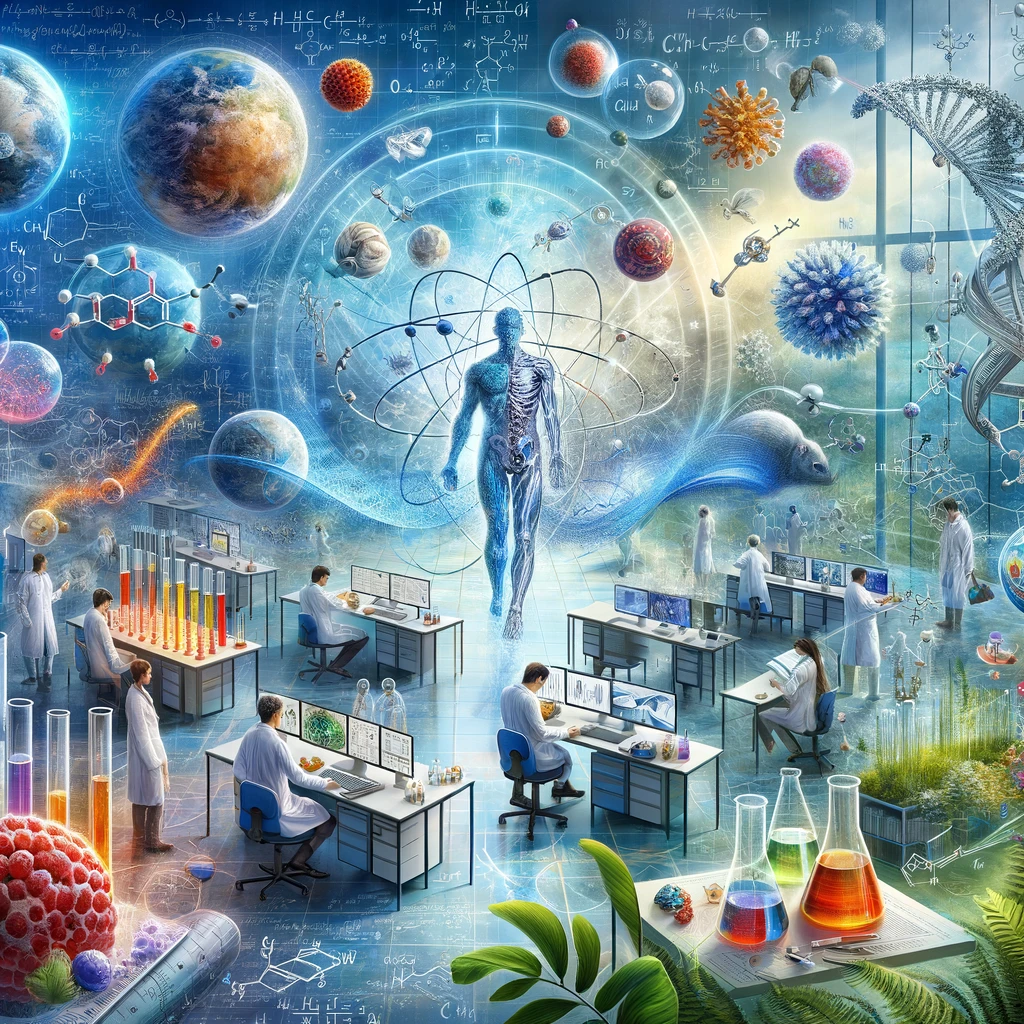
Physics, while not traditionally associated with the study of the human mind, body, and spirit, can still contribute to the integral approach by providing insights into fundamental principles that govern the physical world. Here’s how physics may entwine with the integral approach to biology:
1. Biophysics:
Understanding Biological Processes: Biophysics applies the principles and methods of physics to biological systems. It helps in understanding the physical mechanisms underlying biological processes, such as the interaction of molecules, cellular dynamics, and biomechanics.
Structural Biology: Techniques like X-ray crystallography and nuclear magnetic resonance (NMR), rooted in physics, allow scientists to study the three-dimensional structures of biological molecules. This is crucial for understanding the molecular basis of life.
2. Quantum Biology:
Exploring Quantum Phenomena in Biological Systems: Quantum biology investigates whether quantum phenomena play a role in biological processes. While still an evolving field, researchers explore the potential influence of quantum effects on processes like photosynthesis, olfaction, and even consciousness.
Quantum Mechanics and Neural Processes: Some hypotheses suggest that quantum mechanics might play a role in neural processes. Exploring the quantum nature of phenomena in the brain raises intriguing questions about the relationship between physics and consciousness.
3. Systems Physics:
Complex Systems and Emergence: Physics, particularly in the study of complex systems, helps understand emergent properties. The human organism can be viewed as a complex system, and principles from physics contribute to understanding how the interactions of components give rise to higher-order phenomena.
Network Theory: Physics-based network theory is used to study complex systems, including neural networks. This approach aids in understanding the connectivity patterns within the brain and their implications for cognitive functions.
4. Energy and Metabolism:
Thermodynamics in Biological Systems: Principles of thermodynamics apply to biological systems, explaining energy transfer and metabolism. Physics helps elucidate how living organisms maintain order and function by exchanging energy with their environment.
Energy Transfer in Cells: Physics contributes to understanding processes like ATP synthesis, where the conversion of energy involves physical principles. The study of energy transfer at the molecular level is crucial for comprehending cellular functions.
5. Interdisciplinary Research:
Biological Imaging: Techniques like magnetic resonance imaging (MRI) and positron emission tomography (PET) involve principles of physics. These imaging technologies provide insights into the structure and function of biological tissues, contributing to both medical diagnostics and research.
Biomechanics: Physics plays a role in studying the mechanical aspects of living organisms. Biomechanics explores how physical forces influence biological structures, such as bone mechanics, muscle contraction, and joint movement.
Holistic Perspective:
Unified Theories: Physics has historically sought unified theories to explain fundamental forces and phenomena. While the application to biology may be indirect, the pursuit of unified explanations aligns with the integral approach, aiming for a holistic understanding of the human system.
Interconnectedness of Physical Laws: Recognizing the interconnectedness of physical laws helps integrate physics into a broader understanding of how the physical world influences biological, psychological, and spiritual aspects.
In summary, while physics may not directly address the subjective and experiential dimensions of the human mind and spirit, it contributes valuable insights into the physical principles governing biological systems. From biophysics to quantum biology and systems physics, these contributions enhance the integral approach by providing a deeper understanding of the physical underpinnings of life and the human organism.
The Integration of Biology and Chemistry
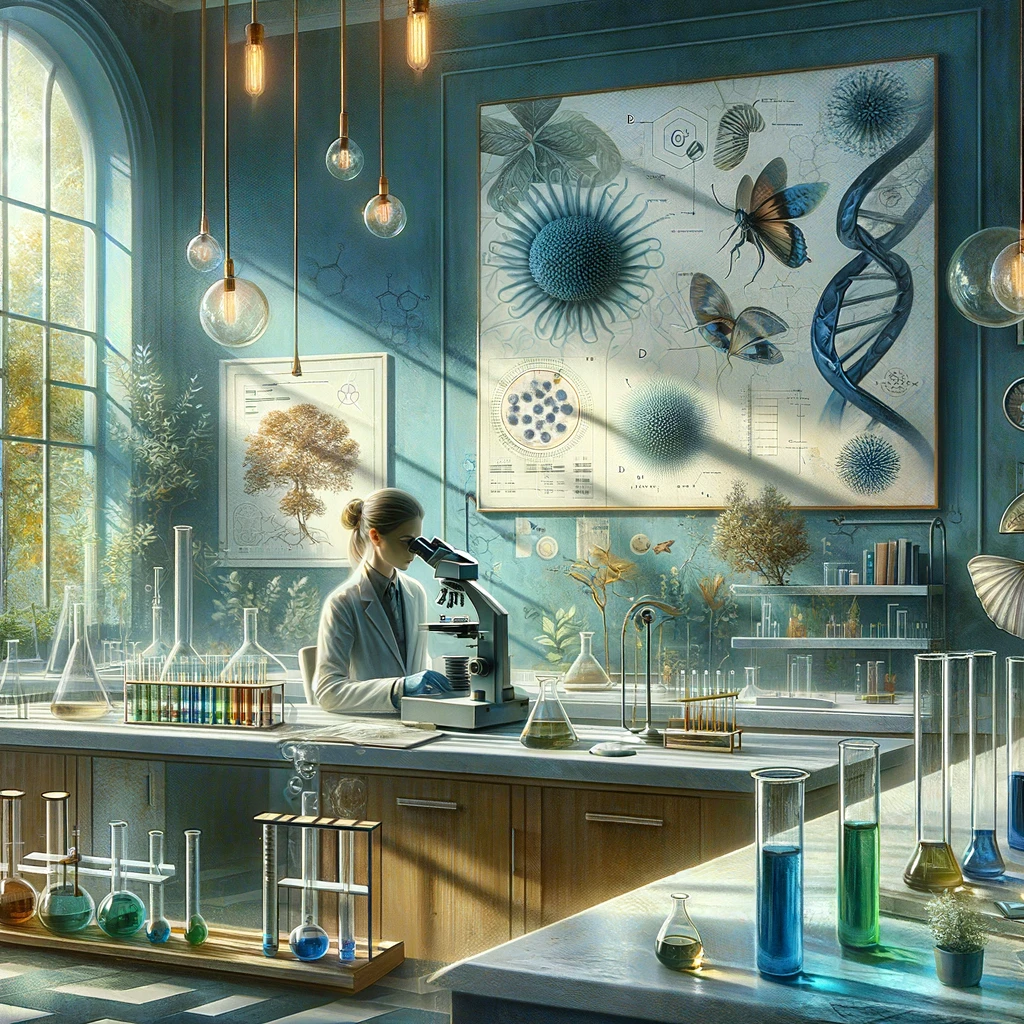
The integration of biology and chemistry refers to the interdisciplinary approach that combines principles and techniques from both fields to understand biological processes at the molecular level. This integration is crucial for advancing our knowledge of life sciences, as many biological phenomena can be explained by chemical interactions and reactions occurring within living organisms.
In this approach, chemistry provides the fundamental understanding of molecular structures, chemical bonds, and reactions, while biology focuses on the study of living organisms, their functions, and processes. By merging these two disciplines, scientists can explore how molecules such as proteins, nucleic acids, and lipids interact within cells to carry out essential biological functions like metabolism, gene expression, and cell signaling.
For example, biochemistry, a sub-discipline that sits at the intersection of biology and chemistry, investigates the chemical processes and molecular mechanisms underlying biological phenomena. This includes studying enzyme kinetics, protein structure and function, DNA replication, and the metabolism of carbohydrates, lipids, and amino acids.
Another example is pharmacology, which applies principles of chemistry to understand how drugs interact with biological targets in the body. Medicinal chemists design and synthesize compounds that can modulate biological processes for therapeutic purposes, while pharmacologists study the effects of these compounds on living systems.
Overall, the integration of biology and chemistry enhances our understanding of life at the molecular level and provides insights that can lead to advancements in fields such as medicine, biotechnology, and environmental science.

